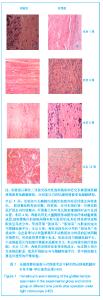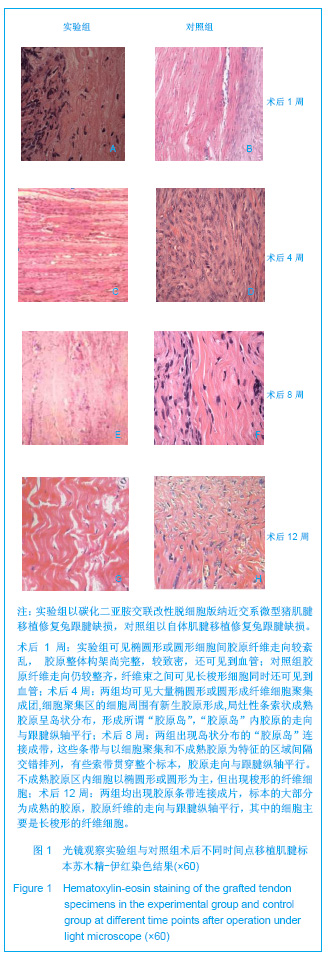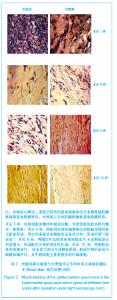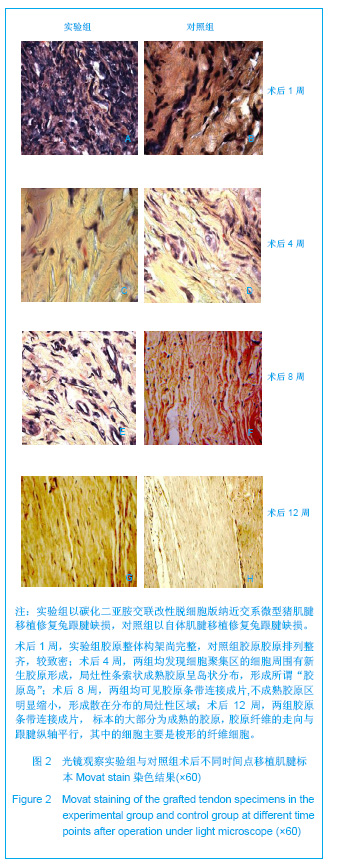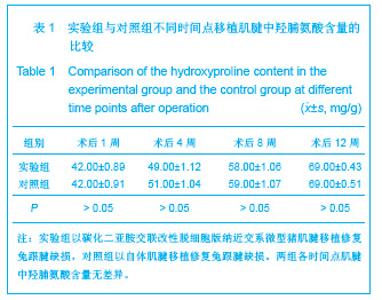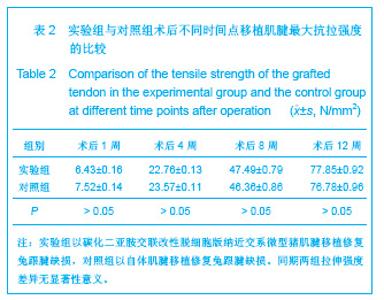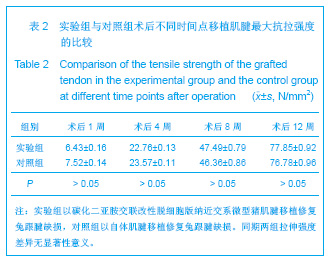| [1] Sharma P,Maffulli N.Tendon injury and tendinopathy: healing and repair.J Bone Joint Surg Am.2005;87(1):187-202.[2] Chen JG,Liu KJ.Chuangshang Waike Zazhi. 2005;7(1): 76-78. 陈继革,刘开俊,白祥军.肌腱移植材料与组织工程化肌腱移植技术[J].创伤外科杂志,2005,7(1):76-78.[3] Zhang YL.Zhonghua Shouwaike Zazhi. 2006;22(3):129-130. 张友乐.异体肌腱移植的研究方向与现状[J].中华手外科杂志, 2006,22(3):129-130.[4] Minami A,Usui M,Ishii S,et al.The in vivo effects of various immunoreactive treatments on allogeneic tendon grafts.J Hand Surg Am.1983;8(6):888-893.[5] Zuo XC,Huang CL,Lin ZH,et al.Shiyong Yiyao Zazhi. 2002; 19(5):363-365. 左新成,黄昌林,林子豪,等.体外不同方法处理异种肌腱的血清免疫实验[J].实用医药杂志,2002,19(5):363-365.[6] Zou YW,Wang ZJ,Ji AY,et al. Zhonghua Shouwaike Zazhi. 1999;15(4):208-211. 邹云雯,王志杰,季爱玉,等.人发角蛋白人工肌腱的免疫学研究及临床应用的初步结果[J].中华手外科杂志,1999,15(4):208-211.[7] Chong AK,Riboh J,Smith RL,et al.Flexor tendon tissue engineering:acellularized and reseeded tendon constructs. Plast Reconstr Surg.2009;123(6):1759-1766.[8] Park SN,Park JC,Kim HO,et al. Characterization of porous collagen/hyaluronic acid scaffold modified by 1-ethyl-3-(3-dimethylaminopropyl)carbodiimide cross-linking. Biomaterials.2002;23(4):1205-1212.[9] Park SN,Lee HJ,Lee KH,et al. Biological characterization of EDC-crosslinked collagen-hyaluronic acid matrix in dermal tissue restoration. Biomaterials.2003;24(9):1631-1461.[10] Veillette CJ,Cunningham KD,Hart DA,et al.Localization and characterization of porcine patellar tendon xenograft antigens in a rabbit model of medial collateral ligament replacement. Transplantation.1998;65(4):486-493.[11] Zhang YL, Yang KF, Gao XS, et al. Zhonghua Guke Zazhi. 1997;17(1);59-62. 张友乐,扬克非,高新生,等.冷冻干燥异体肌腱移植的实验研究与临床应用[J].中华骨科杂志,1997,17(1): 59-62.[12] Wang XS,Zhang XQ,Li QT.Xiandai Linchuang Yixue. 2006; 32(6):422-423. 王宣生,张旭强,李庆泰.同种异体肌腱在肌腱缺损治疗的临床应用[J].现代临床医学,2006,32(6):422-423.[13] Matsumoto H,Toyoda T,Kawakubo M,et al.Anterior cruciate ligament reconstruction and physiological joint laxity :earliest changes in joint stability and stiffness after reconstruction. Orthop Sic.1999;4(3):191-196. |
